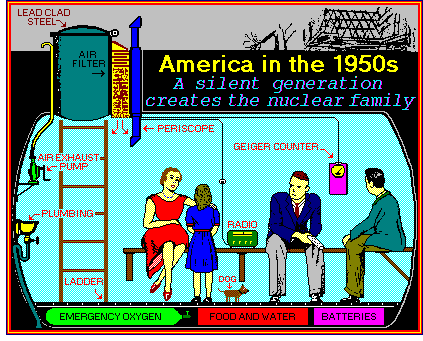

“The model home had a fallout shelter in it.”īy the late 1950s, Seattle and King County had established their own “Civil Defense” departments with the express purpose of protecting the local citizenry from nuclear attack, and went around town identifying existing basements as public fallout shelters. Lorraine McConaghy, historian emerita at MOHAI. In the Eastside suburbs, largely being built at the time for Boeing employees, “you could buy a new home with a fallout shelter,” says Dr. Boeing’s main advice to its workers was that they all build emergency fallout shelters for their families-thick-walled underground lairs stocked with supplies and designed to house people for weeks as waves of toxic radiation scorched the landscape. In 1960, Boeing, then by far Seattle’s largest employer as well as a major industrial supplier for the military, “mailed booklets to every one of its employees with instructions on how to prepare for nuclear war,” Garfield adds. “You would go to the shopping center or the grocery store or the county fair, and you would find out how to protect yourself in case of a nuclear bomb,” says Leonard Garfield, executive director of Seattle’s Museum of History and Industry. Kids performed “duck and cover” drills in schools on a regular basis, and Seattle’s Parent Teacher Association received nationwide attention for producing ID bracelets for kids, so that they could be identified and returned to their families post-explosion. In 1954 in Seattle, you could buy, for just shy of $500-approximately $4,500 in today’s dollars-a “Deluxe Scintillator”: a handheld uranium-radiation detector that came in a smart leather bag for easy storage in your car or home.

They handed out illustrated pamphlets with titles like “EVACUATE: DON’T SIT UNDER THE MUSHROOM” and described plans to get as many people as possible out of the city and into the Cascades in the event of an attack. In the 1950s and early 1960s, the prospect of a nuclear bomb engulfing Puget Sound was so real that local government agencies hosted build-your-own-bomb-shelter tutorials at shopping centers.


 0 kommentar(er)
0 kommentar(er)
